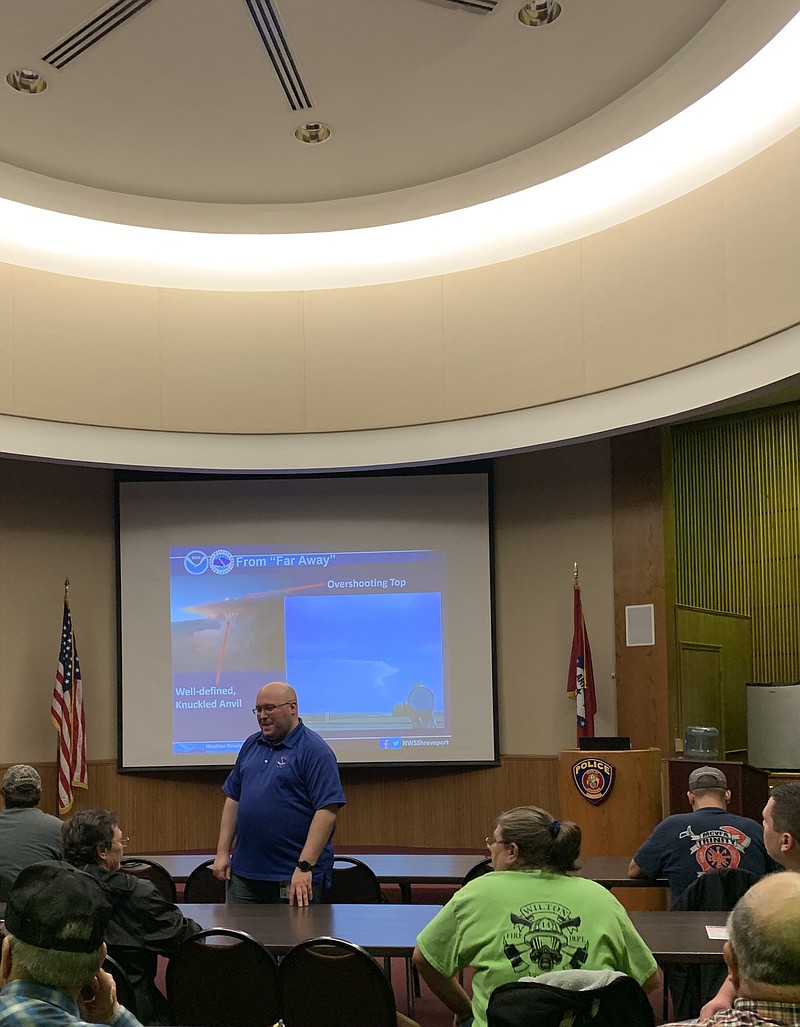Flash flooding is the No. 1 weather-related cause of death and more than 50% of those deaths happen in vehicles, an area meteorologist told a crowd of prospective storm spotters Tuesday night.
The Miller County Office of Emergency Management hosted a National Weather Service Skywarn Storm Spotter course for the public Tuesday at the Bi-State Justice Building. About 25 people from the community attended the course.
The course focused on what storm spotters should look for when reporting bad weather, the categories of severe thunderstorm risks and the difference between a tornado and a funnel cloud.
Most of the Texarkana area remains under a flash-flood watch until 6 p.m. today.
National Weather Service Shreveport meteorologist Chris Nuttall told those taking the course that 6 inches of water in a flash flood can knock a person off their feet and 2 feet of water can sweep away a vehicle.
"The basic rule is to get somewhere higher during a flash flood," he said.
Trees falling on homes or vehicles is the No. 1 cause of wind-related death, Nuttall said. The pine trees in this part of the country do not have very deep roots and can fall easily, especially when the ground is wet.
Tornadoes are classified as violently rotating columns of air that make contact with the ground. If it has not touched the ground, it is a funnel cloud and not a tornado, Nuttall said. Tornadoes can happen any time of year but the peak season for this area is March through May, with April being the most active month.
Tornadoes are measured on the Fujita scale by damage on the ground.
"You cannot tell how strong it is when it is in progress," Nuttall said.
Skywarn, which formed in the early 1970s, is the National Weather Service program of trained volunteer severe weather spotters.
Skywarn volunteers support their local community and governments by providing the NWS with timely and accurate severe weather reports. These reports, when integrated with modern NWS technology, are used to inform communities of approaching severe weather.
Spotters are trained to report on the differences in tornadoes, funnel clouds and wall clouds, hail and how to classify its size, damaging winds, flooding, winter weather and lightning.
Those taking the course learn to keep reports brief, identify themselves as trained spotters, give exact locations and give the time of the event.
Spotters are encouraged to make a report if they are in doubt that anyone else has made a report.
For more information, visit weather.gov/shv.

